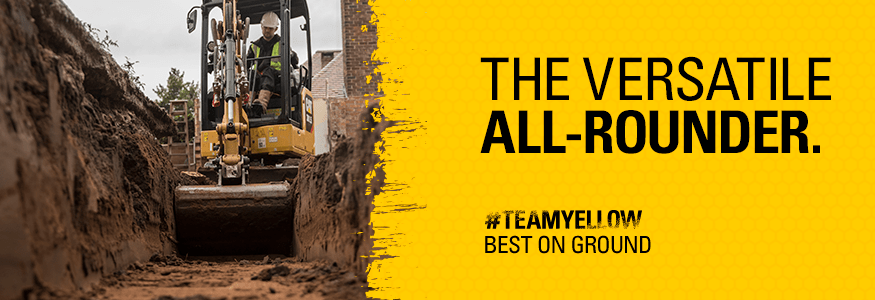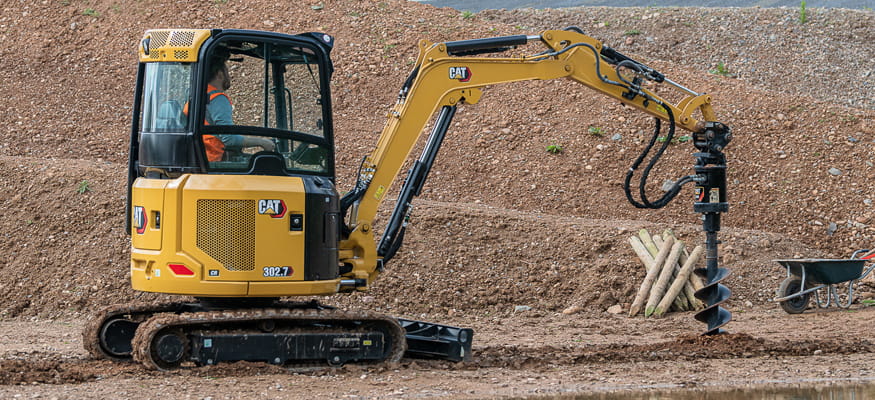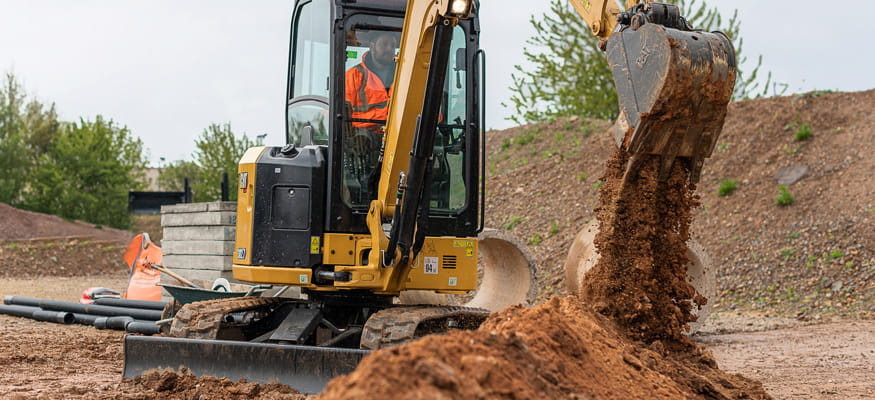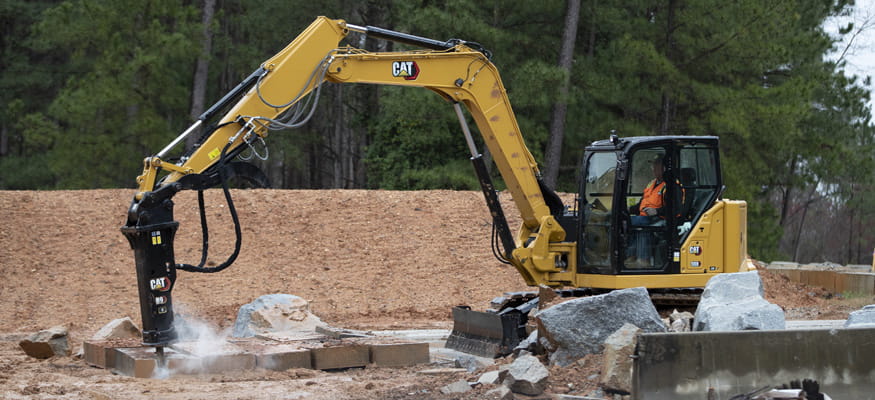Top 5 things to do with your mini excavator
Your mini excavator may be small, but it's just what you need to broaden your gameplay. And with the right kit, it might just be the best all-rounder on your team.

Your mini excavator may be small, but it's just what you need to broaden your gameplay. And with the right kit, it might just be the best all-rounder on your team.

There’s no “I” in team, but chances are your new mini hydraulic excavator can carry a fair bit of the load for a winning performance.
Any good coach will tell you that the key to improving performance is having the right assets on your team. And this is one handy little asset! In fact, it could be the very key to expanding your business. While diversification may not have been a part of your previous match-winning strategy, the fact is that by adding the mini excavator to your team, you’ve opened the door to a whole range of new opportunities.
There’s a lot you can do with these versatile little players straight off the factory floor, but by adding various Cat attachments, you can extend your machine’s functionality – and your entire service offering – to give you the winning edge over your competition.
Here are five applications that could help you find that game-winning magic.
The basics: From grass and topsoil removal, to ponds, foundations and swimming pools, you can dig to your heart’s content. Note that for swimming pool construction, the deeper the hole, the larger your mini excavator needs to be. While a 1-tonne machine may not be quite the right equipment for an Olympic-size pool, it is suited to a lot of backyard pool projects if you’re not intending to dig too deep.
Also, be aware of stability limitations – while your mini excavator is equally as stable as larger excavators, it is not recommended that you operate on anything more than a 20-degree slope. So, as with any project, up-front planning is key.
The tools: If you’re digging in sand, soil and other soft ground, chances are a bucket on the front and blade at the back for stabilisation will help you achieve the bulk of requirements. You may need to alter your bucket size to suit, but otherwise all that’s left is to ensure you’re well versed in safe and effective operations to deliver a precision job. To deal with harder ground, such as rock or concrete, a ripper attachment may be just the ticket to keep you ahead of the game.

The basics: Laying domestic retic, drainage and sewer lines, or creating foundation trenches for retaining and other walls is easy with your mini excavator. You can dig, remove overburden, lay bedding material, carry out compaction, move pipes or blocks into position and backfill. Depending on the type of ground and environment you’re working with, shoring, benching and dewatering may be required to ensure stability and safety.
The tools: With the right bucket size, you’re able to dig with precision, then carry out those additional tasks such as laying bedding material like gravel or blue metal. The bucket can also be used for backfilling. With a thumb attachment, you can lift pipework, limestone blocks, rocks and other heavy materials into place. There’s also a range of lifting/materials handling attachments available that could come in handy if moving heavy loads, and vibratory plate compactors if a firm base is required.
The basics: Putting in a pad, driveway or garden path? With precision control, you can ensure it’s all level and ready to go before the concrete is poured or paving material laid. Depending on the size and nature of the job, there could be multiple stages involved, from removing topsoil, to grading and levelling, to compaction and finishing. You can even use your mini excavator to lift materials such as pavers into place. With the right attachment, it’s even possible to finish concrete. Your mini excavator becomes your jack of all trades in such situations.
The tools: A Cat grading bucket is the secret to success. It allows optimum grading, trenching, slope-cutting and finishing work thanks to its straight edge and the manoeuvrability of the arm to which it is attached. Compactor and material handling options are available for the array of tasks you may need to complete.

The basics: Who’d have known your mini-excavator could be your best friend when it comes to drilling and hole-digging requirements? From planting trees to drilling blast holes, there’s a broad range of auger attachments available for your mini, allowing you to do anything from planting a tree to drilling blast holes in rock.
The tools: Depending on the size of your mini excavator, there’s an auger to suit, plus a broad range of auger bits. The range of auger attachments caters for hole sizes from 4 to 48 inches (102-1219mm). That allows you to drill anything from precision holes in concrete or hard rock, to holes for strainer posts, mature trees or power poles.
The basics: Whether you’re pulling down a pergola or removing a concrete pad, chances are your mini excavator can help. Take note of load limits, stabilisation needs and reach of your machine before undertaking any demolition work. Then select the required attachment and get to work.
The tools: For some of it, your bucket will suffice, however with the variety of thumb, breaker and auger attachments available, you can become a demolition superhero. Be sure to stabilise your machine and ensure adequate protection from potential materials falling from overhead.

That’s just a few of the options that you can achieve with your mini excavator. Check out the range of Cat Attachments available and you’ll soon get an idea of just how much of an all-round team player these versatile machines can be.